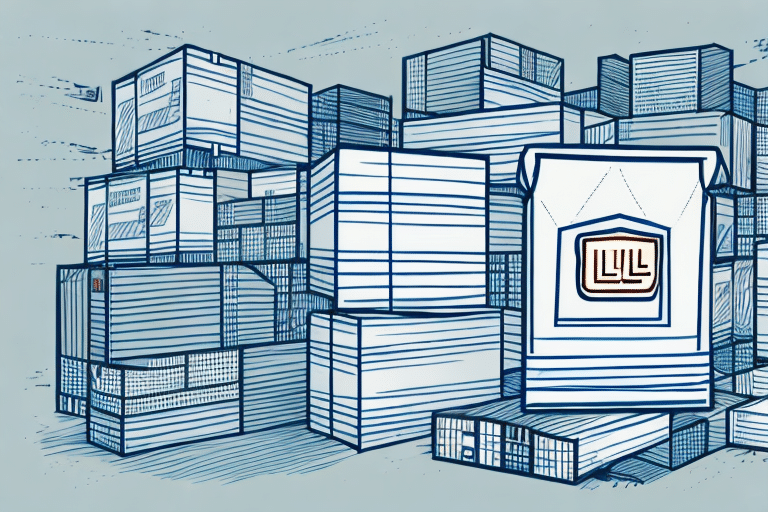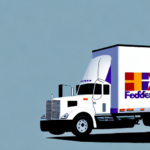Comparing LTL and Parcel Shipping: Understanding the Differences and Choosing the Right Option for Your Business
As a business owner, making informed shipping decisions is crucial for maintaining profitability and ensuring customer satisfaction. Two common shipping options are Less Than Truckload (LTL) and parcel shipping. While they may appear similar, they have distinct differences that can significantly impact delivery times, costs, flexibility, and overall logistics strategy. This comprehensive guide delves into the nuances of LTL and parcel shipping, providing you with the insights needed to make the best choice for your business.
1. Understanding LTL and Parcel Shipping
Before deciding between LTL and parcel shipping, it's essential to understand what each entails:
What is LTL Shipping?
LTL stands for "Less Than Truckload." It is a shipping method used for freight that doesn't require an entire truck, typically weighing between 150 and 10,000 pounds. LTL shipments share trailer space with other shipments, making it a cost-effective option for larger items or bulk orders.
What is Parcel Shipping?
Parcel shipping involves sending small packages, usually weighing up to 150 pounds, through courier services like FedEx, UPS, or USPS. It's ideal for businesses that need to send smaller, lighter items quickly and efficiently.
2. How LTL Shipping Works
LTL shipping is a multi-stage process designed to optimize transportation efficiency:
- Consolidation: Multiple shipments from different businesses are combined onto a single truck.
- Transportation: The truck travels to various terminals where shipments are sorted based on their destinations.
- Delivery: Each shipment is delivered to its respective consignee from the nearest terminal.
This method allows businesses to pay only for the space their shipment occupies, rather than the entire truck, resulting in significant cost savings.
3. How Parcel Shipping Works
Parcel shipping offers a streamlined and straightforward process:
- Labeling: The sender prepares a shipping label with the destination address and necessary details.
- Pickup: The courier collects the package from the sender's location.
- Delivery: The package is transported directly to the recipient's address, often with real-time tracking.
Parcel shipping is known for its speed and reliability, making it a preferred choice for time-sensitive deliveries.
4. Key Differences Between LTL and Parcel Shipping
Understanding the primary differences can help businesses choose the most suitable shipping method:
Size and Weight
LTL is ideal for larger shipments (150-10,000 pounds), whereas parcel shipping caters to smaller packages (up to 150 pounds).
Transit Time
Parcel shipping generally offers faster delivery times compared to LTL, which involves multiple stops and handling processes.
Cost Structure
LTL rates are based on weight, distance, and freight class, while parcel rates depend on package weight, size, destination, and service type.
5. Factors to Consider When Choosing Between LTL and Parcel Shipping
When selecting a shipping method, consider the following:
- Shipment Size and Weight: Ensure the chosen method accommodates your shipment's dimensions and weight.
- Delivery Speed: Determine how quickly the shipment needs to arrive.
- Cost: Analyze the cost implications based on your budget and shipment requirements.
- Service Flexibility: Consider the level of service customization you need.
6. Advantages and Disadvantages of LTL Shipping
Advantages
- Cost-Effective: Share transportation costs with other shippers.
- Environmental Sustainability: Reduced carbon footprint due to consolidated shipments.
- Extensive Coverage: Access to a broader network of destinations.
Disadvantages
- Longer Transit Times: Multiple stops can delay delivery.
- Increased Handling: Higher risk of damage due to more frequent handling.
- Less Flexibility: Limited options for specialized services.
7. Advantages and Disadvantages of Parcel Shipping
Advantages
- Speed: Faster delivery times, including same-day options for urgent shipments.
- Flexibility: Various delivery options to suit different schedules.
- Enhanced Tracking: Real-time updates and detailed tracking information.
Disadvantages
- Higher Costs for Large Packages: Increased rates for heavier or oversized items.
- Limited Coverage for LTL Range: Primarily serves residential and commercial areas.
- Additional Surcharges: Extra fees for services like insurance and expedited delivery.
8. Cost Comparison: LTL vs. Parcel Shipping
Cost analysis is pivotal in deciding between LTL and parcel shipping:
- LTL Shipping: Typically more economical for shipments over 150 pounds or those occupying significant truck space. According to the American Public Shipping Association, LTL rates can vary based on distance, weight, and freight class, often starting at around $50 for smaller shipments.
- Parcel Shipping: More cost-effective for lighter and smaller packages. Services like USPS offer competitive rates, with prices starting as low as $7 for small parcels. However, costs escalate with increased weight and size.
Both methods may incur additional accessorial fees for services such as liftgate delivery, inside delivery, or residential delivery, which can affect the overall shipping cost.
9. Best Practices for Managing LTL and Parcel Shipments
Managing LTL Shipments
- Choose Reliable Carriers: Select carriers with proven track records and competitive rates.
- Accurate Documentation: Provide precise weight and dimensions to avoid unexpected charges.
- Clear Labeling: Ensure shipments are labeled correctly to prevent misrouting.
- Secure Packaging: Use sturdy materials to protect goods during transit.
- Regular Tracking: Monitor shipments to stay informed about delivery status.
Managing Parcel Shipments
- Compare Carrier Options: Evaluate different couriers to find the best fit for your needs.
- Accurate Measurements: Measure and weigh packages accurately to avoid additional fees.
- Complete Address Information: Ensure shipping labels contain precise destination details.
- Secure Packaging: Protect items with appropriate packaging materials.
- Track and Communicate: Use tracking tools and keep recipients informed about delivery status.
10. Tips for Reducing Costs in LTL and Parcel Shipments
Implementing cost-saving strategies can significantly reduce your shipping expenses:
- Consolidate Shipments: Combine multiple shipments to optimize transportation costs.
- Minimize Accessorial Fees: Avoid unnecessary services that can inflate costs.
- Optimize Packaging: Use the right-sized packaging to reduce dimensional weight charges.
- Negotiate Rates: Work with carriers to secure better pricing based on volume and loyalty.
- Automate Shipping Processes: Utilize shipping software to streamline tasks like labeling and tracking, reducing errors and saving time.
11. Latest Trends in LTL and Parcel Shipping
The shipping industry is rapidly evolving, influenced by technological advancements and changing consumer expectations:
- Technology Integration: Adoption of blockchain, artificial intelligence, and automation to enhance tracking, transparency, and operational efficiency.
- Sustainable Practices: Innovations in eco-friendly packaging and logistics to minimize environmental impact.
- Collaborative Logistics: Increased partnerships among carriers, shippers, and logistics providers to optimize resources and reduce costs.
- Advanced Last-Mile Delivery: Implementation of drones, robots, and autonomous vehicles to expedite last-mile deliveries and meet rising consumer demands for speed.
12. Common Mistakes to Avoid in LTL and Parcel Shipments
Preventing common errors can save your business time and money:
- Inaccurate Shipment Information: Ensure all shipment details are correct to avoid delays and lost packages.
- Poor Packaging: Use appropriate materials and methods to protect goods during transit.
- Underestimating Costs: Factor in all potential fees to prevent unexpected expenses.
- Choosing Inappropriate Carriers: Select carriers that align with your shipping needs and service expectations.
- Ignoring Tracking and Communication: Stay informed about shipment status and maintain clear communication with recipients.
13. Future of LTL and Parcel Shipping: What to Expect
The future landscape of LTL and parcel shipping is poised for transformation, driven by several key developments:
- Enhanced Technology: Continued integration of AI and machine learning to optimize routing, predict delivery times, and improve customer experiences.
- Sustainability Initiatives: Greater emphasis on green logistics, including the use of electric vehicles and sustainable packaging solutions.
- Increased E-commerce Demand: As online shopping grows, parcel shipping will become even more critical, necessitating innovations in speed and efficiency.
- Autonomous Delivery Solutions: Expansion of drone and robotic delivery systems to handle increased delivery volumes and last-mile challenges.
- Greater Collaboration: Enhanced partnerships between carriers, technology providers, and logistics firms to create more integrated and efficient shipping networks.
In conclusion, both LTL and parcel shipping offer unique advantages and cater to different business needs. By understanding their differences, evaluating your specific requirements, and staying informed about industry trends, you can make strategic shipping decisions that enhance your business operations and customer satisfaction.




















